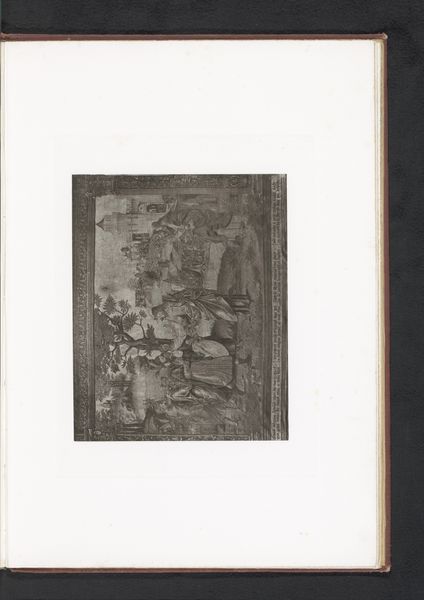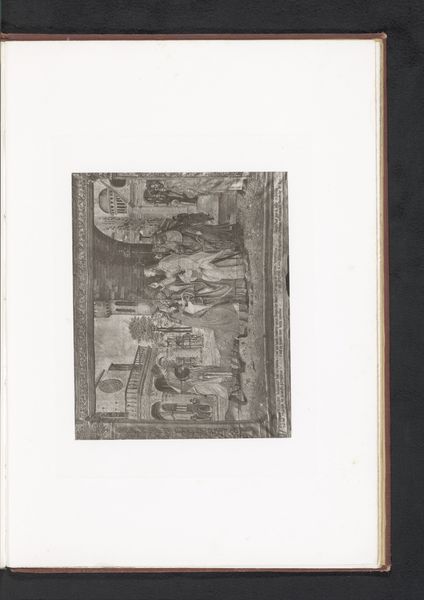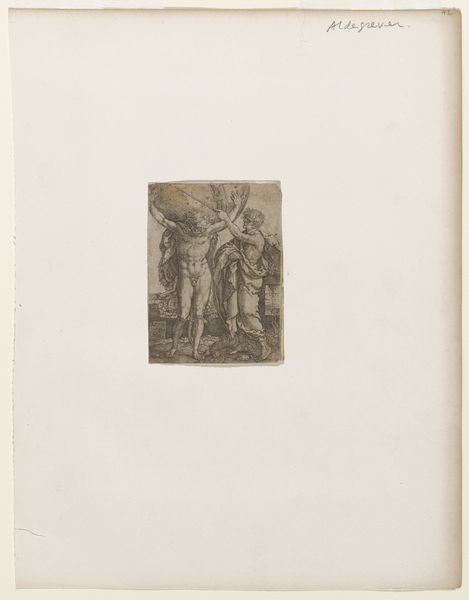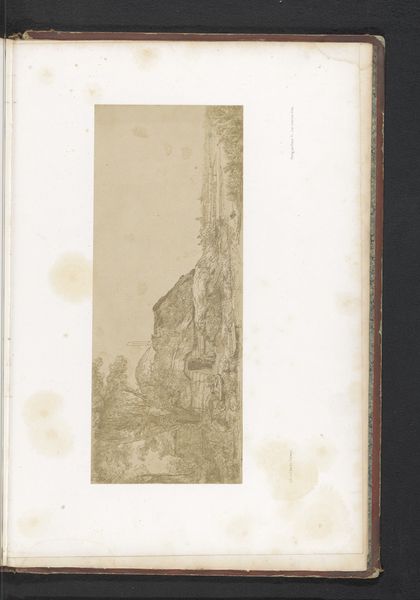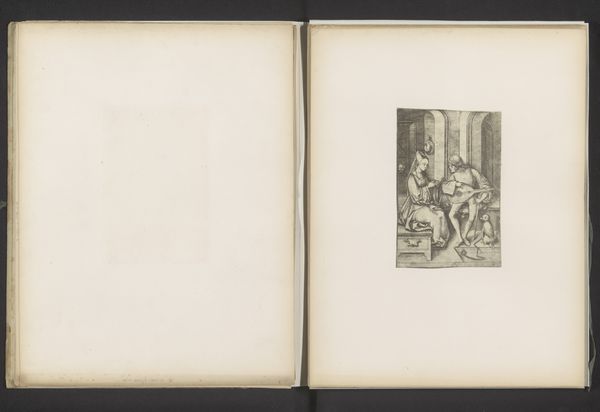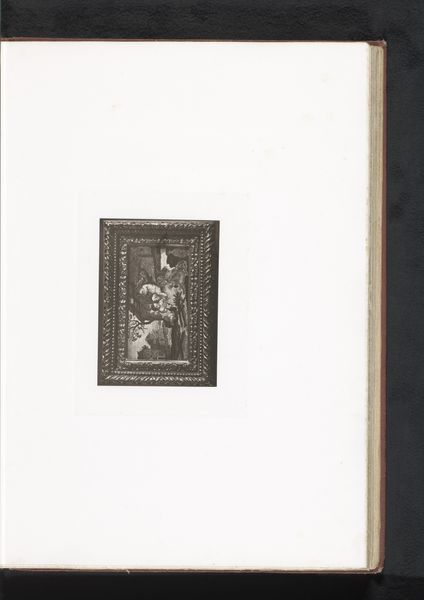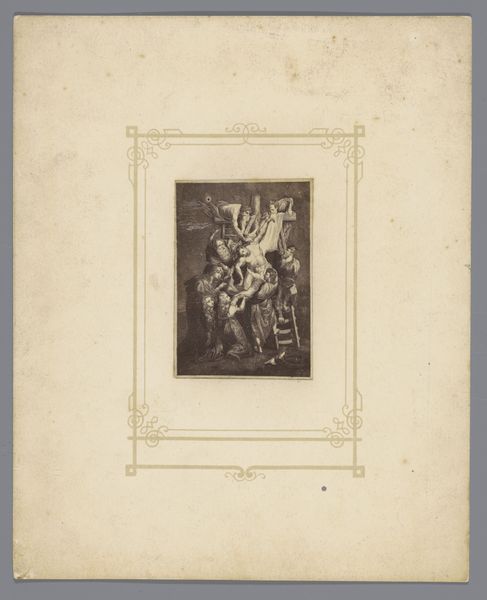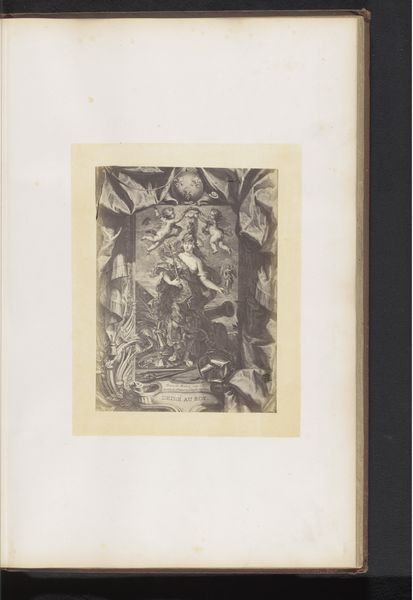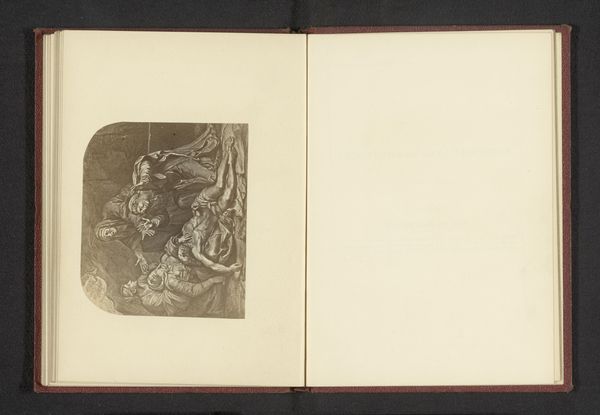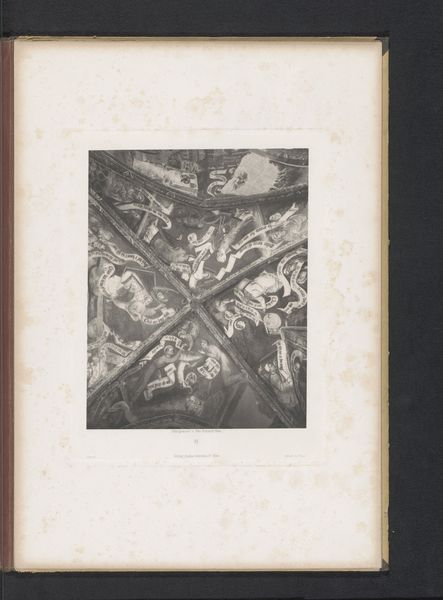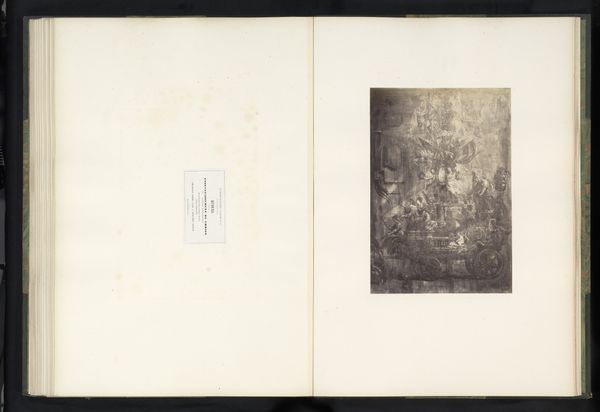
Borduurwerk met een Bijbelse voorstelling van het verzamelen van manna, opgesteld tijdens de Exposition Rétrospective van 1873 in Tours, Frankrijk 1873
0:00
0:00
print, engraving
#
narrative-art
# print
#
genre-painting
#
history-painting
#
engraving
Dimensions: height 165 mm, width 105 mm
Copyright: Rijks Museum: Open Domain
Gabriel Blaise created this embroidery of the gathering of manna, exhibited in Tours, France in 1873, using unknown materials. Representing a scene from the Old Testament, this embroidery encapsulates the 19th-century French religious and social values. France in the 1870s was still grappling with the aftershocks of the Revolution and the rise of secularism. Religious imagery, therefore, served as a powerful tool for reinforcing traditional values. The choice of embroidery as a medium, typically associated with domesticity and female labor, adds another layer of meaning. The image and the medium would have resonated with a society that emphasized the roles of family, religion, and tradition in the face of rapid social change. To fully appreciate this embroidery, a historian might consult exhibition records, religious texts, and social histories of 19th-century France to understand its position within cultural and institutional contexts.
Comments
No comments
Be the first to comment and join the conversation on the ultimate creative platform.


